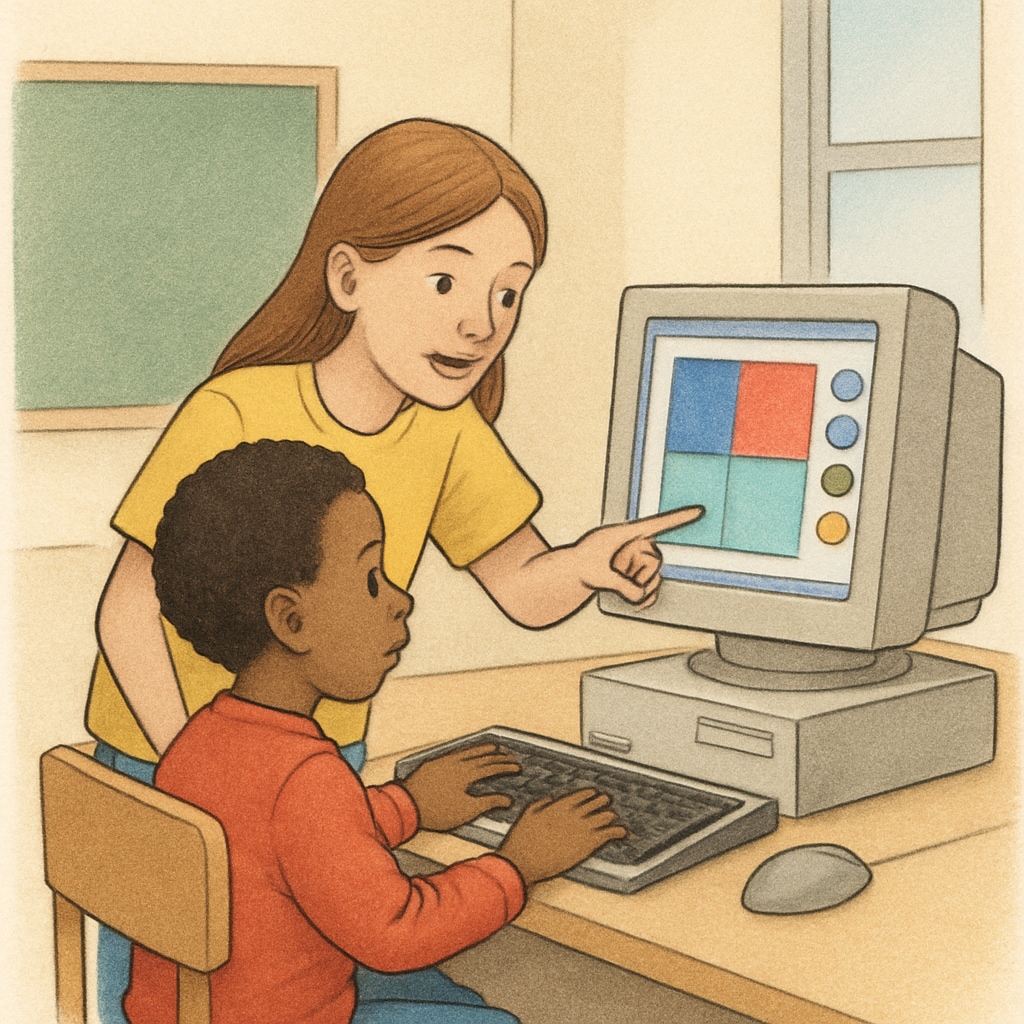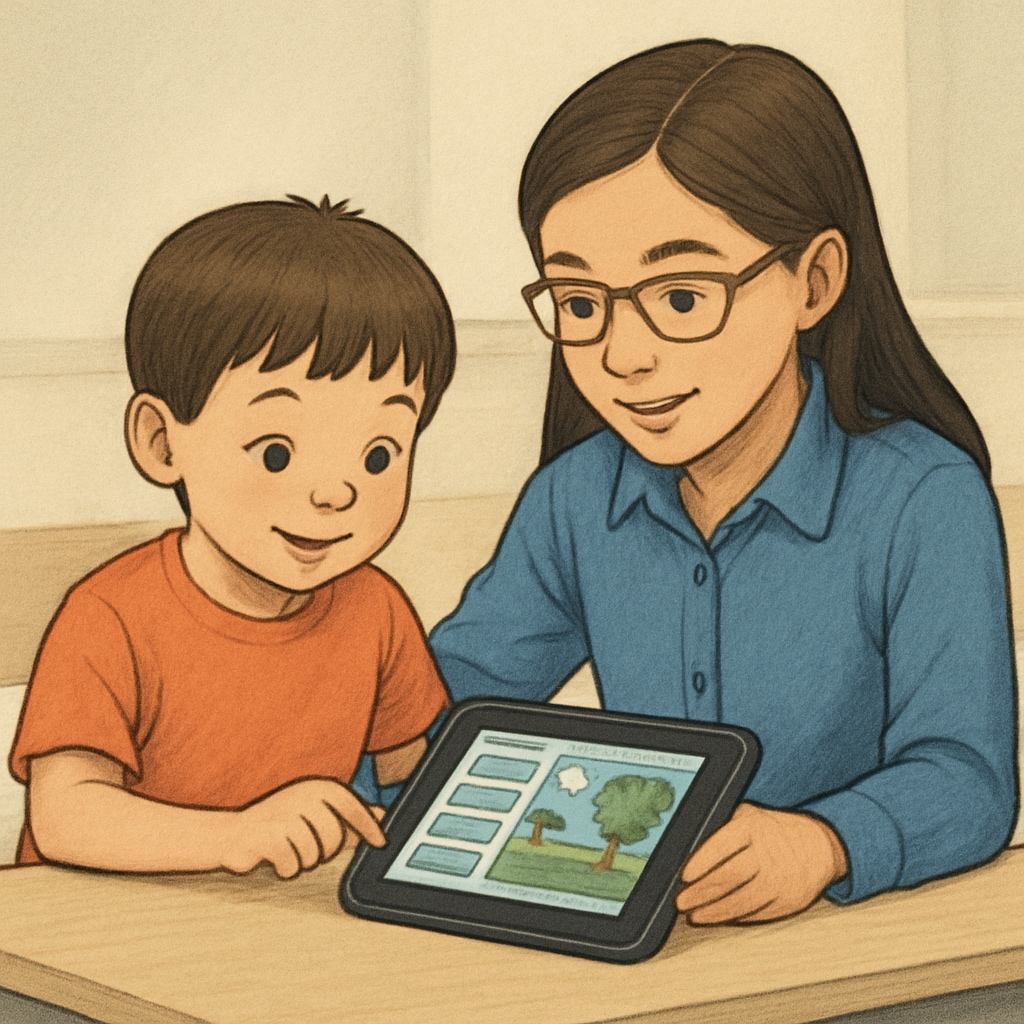Designing effective kindergarten-fourth grade buddy computer activities can create meaningful learning experiences that bridge age and skill gaps. By fostering collaboration between young learners and their older peers, these programs promote social-emotional development, teamwork, and digital literacy. This article explores strategies for structuring such activities, ensuring they are engaging and appropriate for both age groups.
Why Cross-Age Buddy Programs Work
Cross-age buddy projects, like kindergarten-fourth grade computer activities, harness the natural curiosity of younger children and the growing leadership skills of older students. These programs allow older students to mentor younger ones, building confidence and empathy while reinforcing their own knowledge. Younger children benefit from personalized attention and exposure to new skills, making these programs a win-win for both age groups.
For example, pairing a kindergartener with a fourth-grader can help the former learn basic computer navigation, while the latter practices explaining concepts clearly. According to Britannica, cooperative learning is a proven method for enhancing engagement and achievement in educational settings.

Key Elements of Successful Buddy Computer Activities
When designing activities for kindergarten and fourth-grade buddies, it is essential to consider the developmental differences between the two age groups. Successful programs balance structure and flexibility, allowing for creativity while ensuring tasks are manageable for both partners. Here are some key elements:
- Clear Objectives: Define what the activity aims to achieve, such as teaching basic computer skills, fostering creativity, or solving a simple problem.
- Age-Appropriate Tools: Use software or platforms that are intuitive for young learners but still engaging for older students.
- Defined Roles: Assign roles to each buddy, such as navigator and guide, to ensure active participation.
- Interactive and Fun: Incorporate gamified elements or creative tasks to maintain interest.
- Reflection Time: Allocate time for buddies to discuss what they learned and how they worked together.
For instance, a drawing activity using a simple graphic design tool could allow kindergartners to explore colors and shapes while fourth-graders assist with tool usage and design ideas.
Suggested Activities for Kindergarten and Fourth-Grade Buddies
Here are a few examples of buddy computer projects that cater to both age groups:
- Digital Story Creation: Partners create a short digital story using a tool like StoryJumper. The kindergartener narrates a simple plot, while the fourth-grader helps with typing and adding illustrations.
- Basic Coding Games: Use platforms like ScratchJr, where younger students drag and drop blocks to create animations, guided by their older buddy.
- Interactive Quizzes: Fourth-graders design a simple quiz on Google Forms, and kindergartners answer the questions with their help.
- Online Puzzle Solving: Buddies work together to complete online jigsaw puzzles, improving problem-solving and collaboration skills.
- Photo Editing Fun: Partners use basic photo editing tools to create a collage, with kindergartners selecting images and fourth-graders managing the software.

Overcoming Challenges in Buddy Programs
While these programs offer numerous benefits, they also come with challenges. For example, the skill and experience gap between kindergartners and fourth-graders can sometimes lead to frustration. To address this:
- Provide Training: Offer a brief orientation for fourth-graders on how to mentor younger children effectively.
- Monitor Progress: Teachers should occasionally check in to ensure both buddies are engaged and on track.
- Adjust Complexity: Be ready to simplify tasks or provide additional support if either student struggles.
By addressing potential roadblocks proactively, educators can create a smoother and more enjoyable experience for all participants.
Conclusion: Building Bridges Through Buddy Activities
Kindergarten-fourth grade buddy computer activities offer a unique opportunity to bridge age and skill gaps, fostering collaboration, empathy, and mutual learning. By focusing on clear objectives, age-appropriate tools, and engaging tasks, educators can create meaningful cross-age learning experiences. As a result, students not only develop technical skills but also build relationships that enhance their social-emotional growth. For more insights into effective educational practices, visit Edutopia.
Incorporating these strategies can turn buddy programs into a transformative experience for both kindergartners and fourth-graders, proving that learning knows no age boundaries.


